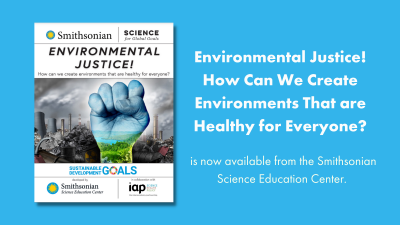


Content:
The environment is the conditions and things that surround us. The environment includes conditions and things made by people and natural systems. Part of the environment is things created by people, such as roads and houses, and conditions created by people, like a feeling of love or social belonging. This human-created environment is part of the larger natural environment. The natural environment includes all living things. It includes systems like the ones that create rocks and the weather. The natural environment is not created by people, but people can harm or protect the natural environment.
The environment includes the conditions and things very near to you, like the ones found in your home, school, and neighborhood. The environment also includes things and conditions all around the world. Sometimes it might be helpful to think about the local and global environments or the human-created and natural environments separately. But these environments cannot really be separated. They are all are connected. You are part of the environment, and the environment is part of you.
In the Environmental Justice! guide, when you think about your environment you will be thinking about both the human-created environment and the natural environment.
Environmental Justice! is the new community response guide from the Smithsonian Science for Global Goals project. In this free guide, young people explore the question “How can we create environments that are healthy for everyone?”
Beginning by pondering their own identity and relationship with their environment, young people also investigate their ideas about justice, environmental impacts on health, local examples of environmental problems and injustices, and ways they can act. Opportunities to gather data, consider causes, and interrogate the systems that create problems help young people develop research and critical thinking skills.
Guided to find out more about the environmental situations within their own communities, young people are prompted to share this information and join others in finding innovative solutions to the problems they identify. The guides were developed in consultation with over two dozen groups of experts, activists, and young people from ten countries around the world. Quotes and ideas from individual scientists, researchers, and activists are shared to help inspire youth and provide guidance on ways to take action to make their local and global communities more just.
IAP Young Physician Leaders (YPL) alumni Sadhbh Lee, Paramdeep Singh and Amarjargal Dagvadorj are among the experts who helped shape this guide.
Every day people around the world are affected by their environment in lots of different ways. Some ways are good and help keep you healthy and happy. Some ways are bad and may harm your physical or mental health. As highlighted at page 16 of Environmental Justice!, the effect of the environment on you includes:
People have changed local and global environments in big and small ways. As highlighted at page 18 of Environmental Justice!, these ways include:
Air pollution, rising temperatures, natural disasters, biodiversity loss—the environment and environmental factors influence pretty much every health problem that there is out there.
—Dr. Sadhbh Lee
Sadhbh Lee is a doctor from Ireland and a founding member of the organization Irish Doctors for the Environment. Her motivation comes from a great love of nature, especially the ocean, and a desire to protect the health of both her patients and the planet.
People who live in highly polluted areas are more likely to become ill with many diseases. Climate change is actually leading to faster transmission of many infections.
—Dr. Paramdeep Singh
Paramdeep Singh is a doctor and is working as an additional professor of radiology at All India Institute of Medical Sciences in Bathinda, India.
